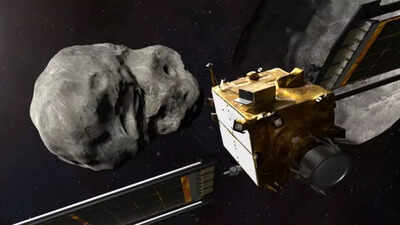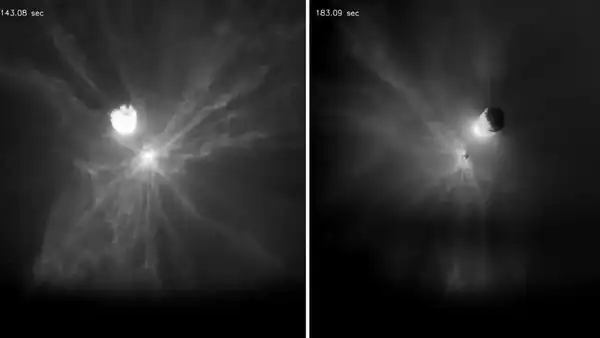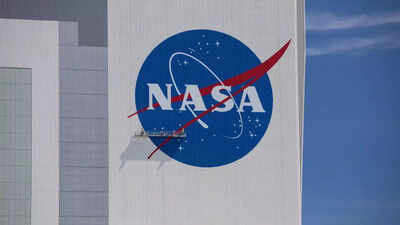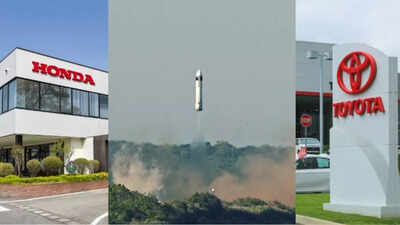NASA’s DART mission ejected boulders from asteroid Dimorphos, offering new insight into asteroid collision outcomes |

NASA’s ambitious Double Asteroid Redirection Test (DART) mission was designed to prove that humanity could redirect a potentially hazardous asteroid using sheer kinetic force. Launched toward the binary asteroid system of Didymos and its smaller moonlet Dimorphos, DART intentionally collided with Dimorphos on September 26, 2022. The goal is to shift its orbit as a planetary defense rehearsal.While the mission was declared a major success after Dimorphos’ orbit was shortened by 32 minutes—far surpassing the goal of 73 seconds—scientists have now discovered the impact had unexpected side effects.
NASA’s DART mission asteroid impact unleashed over 100 boulders; reveals new study
A new study published in The Planetary Science Journal reveals that the spacecraft’s impact not only deflected the asteroid—it also triggered the ejection of over 100 boulders that significantly contributed to the total momentum transfer. Tony Farnham, lead author and research scientist at the University of Maryland, emphasised that this extra “kick” changes how scientists must model asteroid deflection in future missions.“These boulders carried almost as much momentum as the DART spacecraft itself,” said Farnham. “We now have to consider debris ejecta when planning any future asteroid redirection efforts.” The mission’s data was complemented by observations from LICIACube, a small Italian CubeSat deployed just before impact. It recorded high-resolution images of the collision and tracked the trajectory of the ejected debris between 29 to 243 seconds post-impact.LICIACube’s cameras captured 104 visible boulders ranging from 0.2 to 3.6 meters in radius shooting away from Dimorphos at an average speed of 52 meters per second (around 116 mph). Strangely, the boulders did not scatter evenly. Instead, they formed two distinct clusters, a pattern that hints at complex underlying physics.

Source: Space.com
DART impact caused bigger shift in Dimorphos’ orbit than expected
Co-author Jessica Sunshine, who previously worked on NASA’s Deep Impact mission, believes that DART’s solar panels likely struck two larger surface boulders named Atabaque and Bodhran. This collision might have shattered them, giving rise to the dense southern cluster of ejecta.According to the team’s analysis, these secondary fragments account for 96% of the observed boulder momentum three times greater than that of DART itself. That momentum was directed almost entirely southward, potentially altering Dimorphos’ orbital inclination in relation to Didymos’ equator. The surprise presence of boulder ejecta reveals the limits of relying solely on ground-based observations. Prior models underestimated how rubble-pile asteroids—asteroids composed of loosely held rocks—respond to high-speed impacts. This complexity underscores the importance of factoring in asteroid surface structure when planning future missions.The European Space Agency’s Hera mission, currently en route, is expected to conduct a detailed post-impact survey. It may confirm whether Dimorphos is now tumbling in a slightly altered orbit and further validate how much momentum was contributed by ejecta. As Sunshine put it, deflecting an asteroid is like playing pool at a planetary scale. “If we need to move an asteroid even slightly to avoid a collision with Earth, every force, angle, and surface feature matters,” she said. “Ignoring these boulder dynamics would be like taking a shot without aiming.”Also Read | July Full Moon 2025: When and where to watch the Buck Moon in India, and the meaning behind its name






